For Four Years, This Polynesian Canoe Will Sail Around the World Raising Awareness of Global Climate Change
A Smithsonian curator chronicles the genesis of the project that hearkens back to when ancient navigators traveled the oceans
She’s 62-feet-long, 20-feet-wide, and when fully loaded, 12 elegant tons of pure aloha. And she has just departed on a four-year journey to circumnavigate the globe. Built in 1975 for a one-time voyage from Hawaii to Tahiti, the Hōkūleʻa is a replica of an ancient Polynesian voyaging canoe. She was originally endowed with two transformative purposes—to prove once and for all that Polynesians settled the Pacific islands through intentional voyaging; and to restore for modern Native Hawaiians the foundational object of their traditional culture—the voyaging canoe. To her people, she is the physical embodiment of a legend that has reappeared on Earth for the first time in 600 years.
So when she completed her journey to Tahiti on June 4, 1976, after 34 days at sea, the outpouring of joy was overwhelming. For Pacific Islanders as a whole, the response was tremendous. The Polynesians were colonized by various European (and later, Japanese and American) powers, and sometimes relegated to marginal status in their own ancestral lands. Now, they could now look with pride to this craft and its accomplishments and say, “We are truly the descendants of great navigators.”
Polynesian migration resides among the greatest single human adventures of all time, comparable to Columbus’ 1492 voyage across the Atlantic and the Apollo 11 crew’s landing on the moon. Here were small-island peoples using stone tools, crafting rope from coconut husks and stitching pandanus leaves into sails to build an ocean-going craft that could journey 2,500 miles and back again. But they also ingeniously developed a complex science of star and sea knowledge that enabled them to track their journeys, find islands beyond the horizon, mark them on mental maps and voyage back and forth across great distances. When we compare this to the 1492 voyage of Christopher Columbus, the contrast is impressive. Five hundred years after the Polynesians began fanning out across the Pacific, they managed to locate tiny dots of land in a vast ocean that covers a third of the planet, Columbus sailed across a relatively narrow Atlantic Ocean. His target was, by comparison, easy; he could have hardly missed the Americas, with 10,000 miles of coastline stretching nearly from pole to pole.
Both Hōkūleʻa's story and the revival of traditional Oceanic navigation have been well-documented. Those whose vision and determination gave birth to this canoe and to the Polynesian Voyaging Society include Hawaiian artist Herb Kawainui Kane, anthropologist Ben Finney and canoe enthusiast Tommy Holmes. And then there is Pius Mau Piailug, the soft-spoken navigator from the tiny island of Satawal in Micronesia, who agreed to steer the canoe and, later, to teach the art of navigation to a cadre of new Polynesian voyagers. There are countless others–those who helped build and maintain the canoe; provisioned and sailed it; and the family members who supported them.
I first learned of the Hōkūleʻa around 1986 when, as a geography graduate student at the University of Hawaii, I attended a Ben Finney lecture on the canoe’s inaugural voyage. Captivated, I went on to teach a summer-session there on the geography of Hawaii, lecturing on Polynesian migrations and navigation. Much of what I taught came from the powerful documentary “Navigators: Pathfinders of the Pacific,” produced by the Harvard-trained anthropologist Sam Low. But I also recounted stories and testimonies from my mentor, the late Abraham Pi‘ianai‘a. He had given decades of study and thought to this topic, and two of his sons sailed on the Hōkūleʻa. It was Low who pointed out that the channel between two Hawaiian Islands is called Kealaikahiki—“The Path to Tahiti.”
I went on to teach at Towson University in Baltimore, where I developed a web-based cultural-geography education project for Hawaii and Micronesia called Pacific Worlds. I interviewed navigators, canoe builders and seafarers on some remote islands not too far from Mau Piailug’s tiny coral atoll, Satawal, in the Western Pacific. Later, while working on a proposed exhibition for the National Museum of the American Indian, I was privileged to interview many former and current crewmembers of the Hōkūleʻa and other Hawaiian voyaging canoes. I also spoke with canoe builders, artisans and culture keepers, creating a record of oral histories. Now a member of the Polynesian Voyaging Society myself, I trained this past March for the “World Wide Voyage.” I hope that I may be among those selected to crew the canoe for some small part of that journey.
Since her birth, Hōkūleʻa has spawned a growing fleet of voyaging canoes all across the Pacific, as well as new generations of seafarers learning the ancient arts of traditional navigation. Now 40 years later and after more than 150,000 miles of journey, the Hōkūleʻa has set out once again on her greatest quest. Her circumnavigation of the globe intends to emphasize a shared journey that we all crew together and which concerns the fate of our planet.
For as navigator Nainoa Thompson has said, “The sail plan we are on is not sustainable.” Climate change and a host of human-induced environmental crises are imposing themselves more acutely into our lives and the lives of all living beings on Earth. It is up to us to change our ways. As a symbol of sophisticated traditional knowledge and values, the Hōkūleʻa will serve as an ambassador to the world, bearing the message that the time has come to invoke the wisdom of our ancestors—all our ancestors—about how to live more harmoniously on land and sea.
There is a Hawaiian proverb, “He wa‘a he moku; He moku he wa‘a." It translates into, “The canoe is an island, the island is a canoe.” It means that the lessons of surviving on a voyaging canoe across the deep ocean are the same lessons for surviving on small, isolated islands. Now with globalization and global environmental crises, the Earth is the island, and the Earth is the canoe. We are literally all in the same boat.
In the course of my research, I distilled five values that the voyaging canoe teaches us, which I will expand on further in future articles:
‘Ike (knowledge): knowledge is essential, and it comes from many sources: observation, study, experience, intuition and experimentation and scientific method. The World Wide Voyage brings together millennia-old knowledge of voyaging, navigation and land-finding with modern scientific knowledge about the environment.
Po‘okela (pursuit of excellence): In traditional times, voyaging canoes were made with neolithic implements and technology. To build a large craft that could travel 2,500 miles and back, “good enough” was not good enough. It required excellence. So, too, in modern society do we seek ever better technologies and methods. But how do we apply them, and toward what ends?
Kuleana (rights and responsibilities): Kuleana means something similar to one’s “turf.” It is the area over which you have responsibility, but you also have the rights that go with it. Rights and responsibility go together. Today, nearly all the emphasis is on rights—“freedom”—but very little on responsibility. On the canoe, all must attend to their areas of responsibility. There is no one to take up the slack if you fail to do your duty. When all of us do our parts, it all gets done and we all survive.
Pono (balance, harmony, proper action): Pono means to act in a way that is appropriate and proper for the situation, thereby maintaining order, balance and harmony. It means to “do the right thing”—not just situationally, but in harmony with all of creation. It is as much a spiritual sense of rightness as a social one.
Mālama (to nurture, take care of): On the canoe, the navigator is the father and the canoe is the mother. Obey the father and look after the mother—both of them take care of you to make sure you survive and the journey is successful. This also applies to the supplies aboard the canoe: look after them, make them last, add to them when you can. Because what you have is all you have.
Aloha (compassion, loving-kindness): often translated as “love” or “hello” and “goodbye,” aloha bears more similarity to namaste in the Hindu tradition—representing the acknowledgement that there is a divine spark within each of us. It is an open-hearted, compassion and deep love that acknowledges the fellow humanity of other persons. Aloha is the base that connects all the other five values above.
These values, or ones like them, can be found in any culture if we look closely. All of our ancestors understood that we depend on the Earth, and we depend on one another, to survive and flourish.
To participate in the telling this new story of Hōkūleʻa, I intend to share some of the stories and lessons of its past, which will compliment the offerings— blogs and videos fresh off the canoe, and other information about the voyage from the participants themselves— that are presented in detail on the voyage’s wonderful website. I look forward to enriching this conversation with stories and facts about voyaging, navigation and canoe building; about the peoples and cultures visited along the way; environmental issues relating to land and sea; and about the histories and cultural values these peoples offer to teach us about living sustainably on the planet.
The Hōkūleʻa arrives in the Washington, D.C. area on Sunday, May 15, to the Old Town Waterfront Park Pier, 1A on Prince Street, in Alexandria, Virginia, from noon to 5:00 p.m. The Smithsonian's National Museum of the American Indian celebrates the arrival with a number of programs and film screenings.
/https://tf-cmsv2-smithsonianmag-media.s3.amazonaws.com/accounts/headshot/Doug-BPBM-2011.jpg)
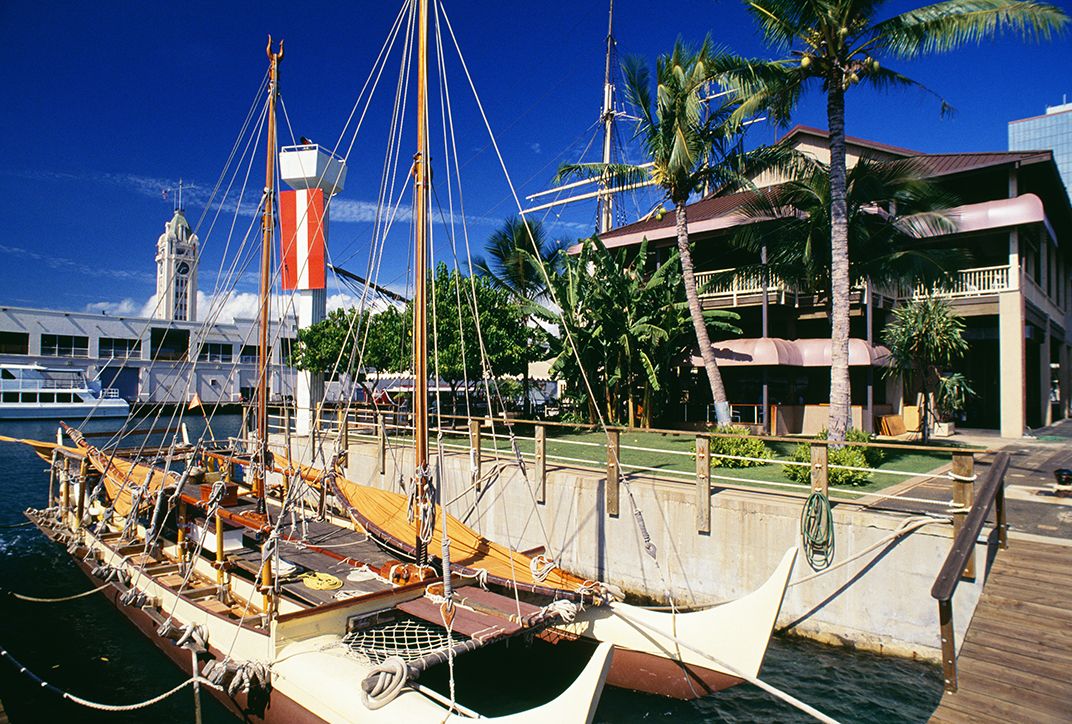
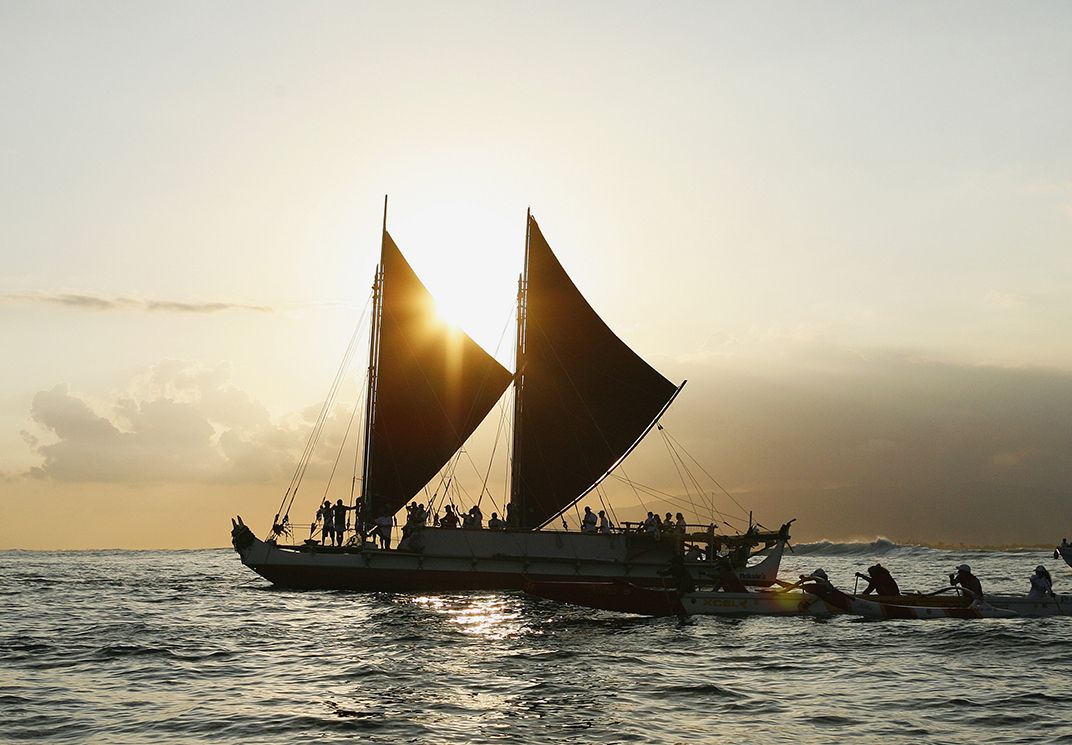
/https://tf-cmsv2-smithsonianmag-media.s3.amazonaws.com/filer/4d/2d/4d2d726a-303e-44ac-9a56-ea7de93a7d54/42-21810189.jpg)
/https://tf-cmsv2-smithsonianmag-media.s3.amazonaws.com/filer/c4/b7/c4b78d75-cdda-4184-afb6-9419d0af74cf/42-58578364.jpg)
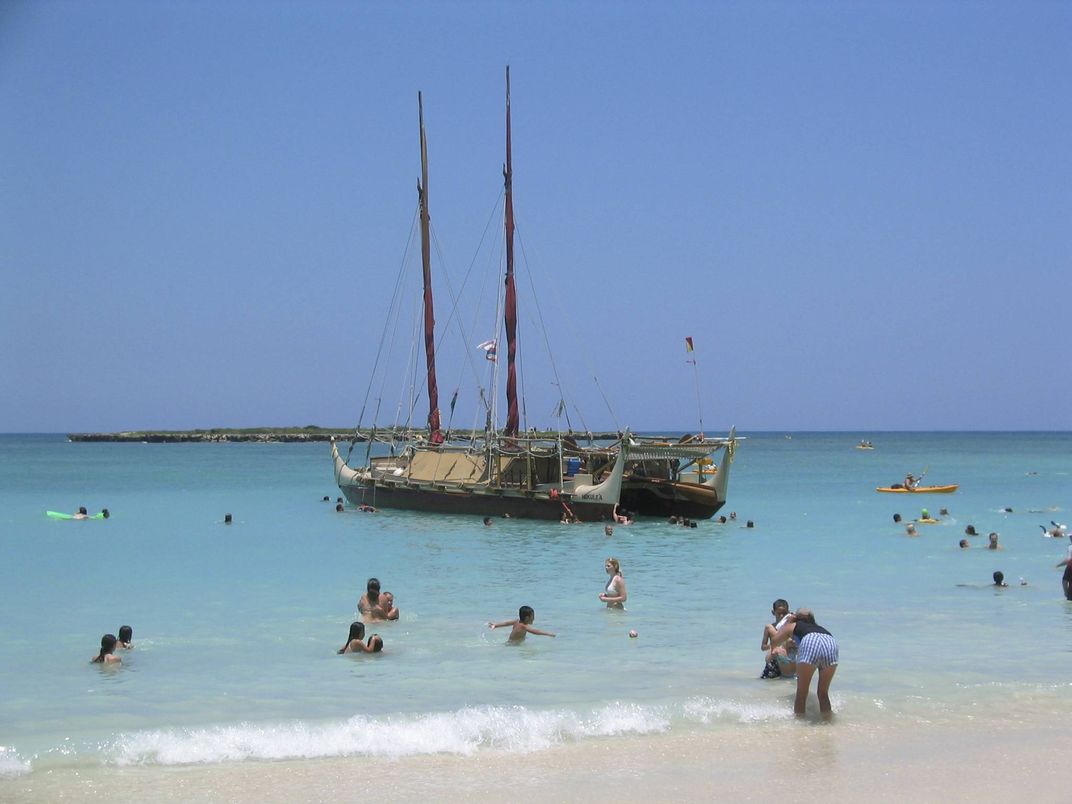
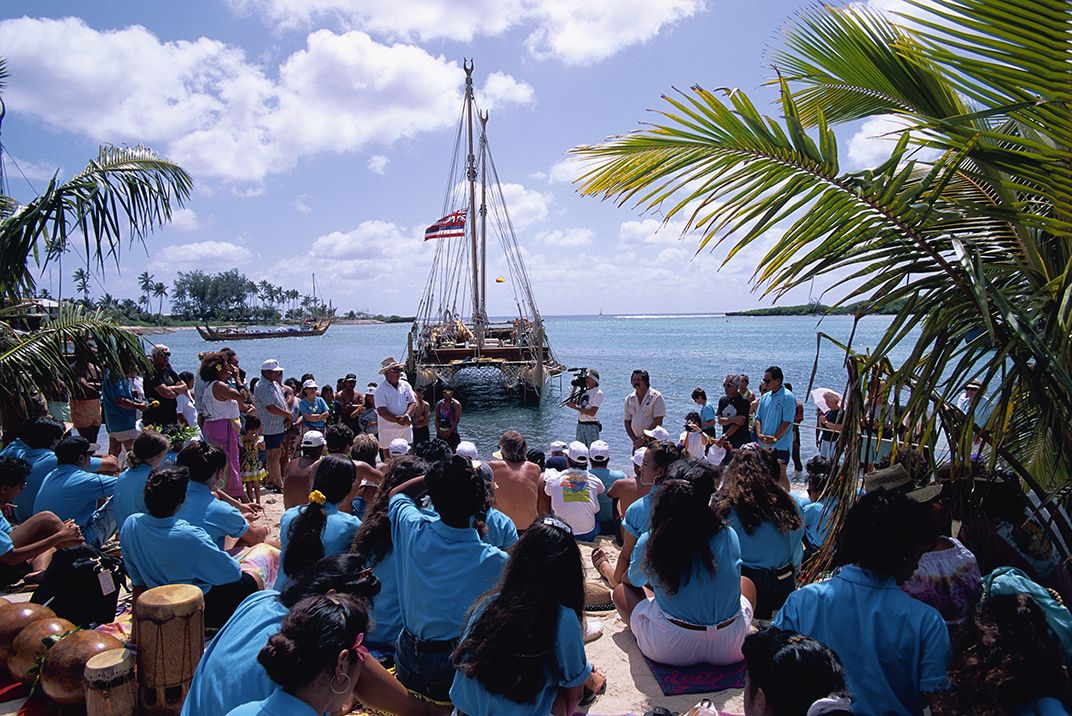
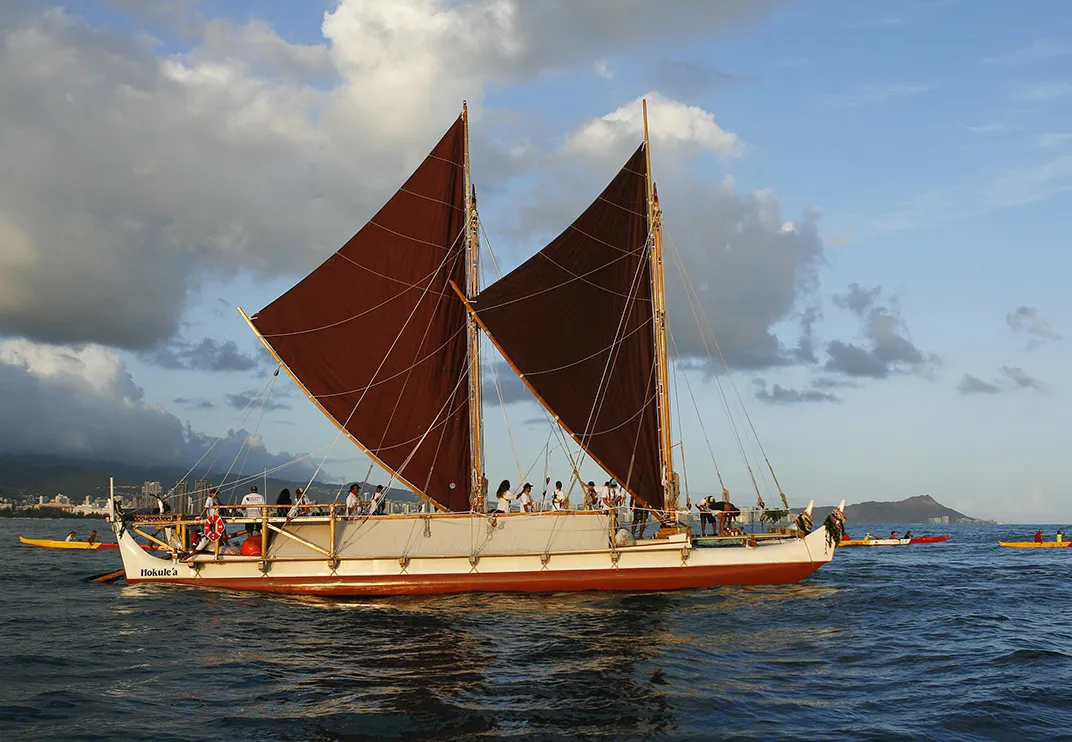
/https://tf-cmsv2-smithsonianmag-media.s3.amazonaws.com/accounts/headshot/Doug-BPBM-2011.jpg)